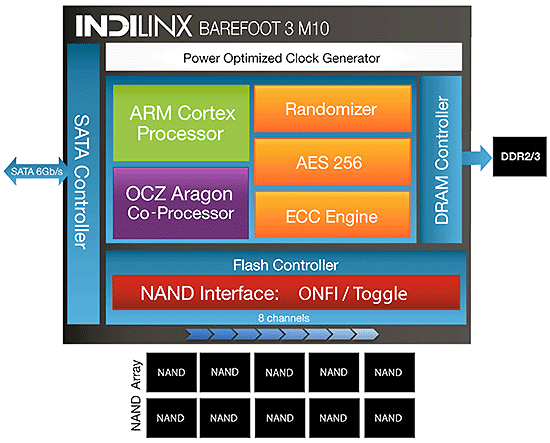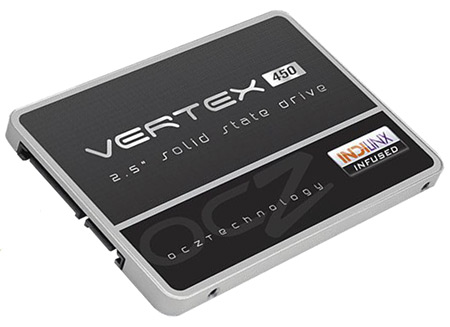OCZ Vertex 450 Solid State Drive Review
Introduction and Specifications
OCZ already offers a wide array of popular, high performance SSDs, but to the company’s credit, it’s not resting on its laurels. After employing SandForce controllers on some of the earlier Vertex SSDs, OCZ snapped up Indilinx and is using what is now its own proprietary silicon in many of its drives. Thus, the brand new OCZ Vertex 450 SSD we'll be showing you here today with an Indilinx Barefoot 3 M10 series controller inside is very much a “vertical” effort, with the Indilinx and OCZ-owned PLX teams building both the silicon and firmware.
OCZ will be selling Vertex 450s in capacities of 128GB, 256GB, and 512GB. The 128GB version will offer 525/290 MBps sequential read/write speeds with 75,000/70,000 4KB random read/write IOPS. The larger-capacity versions offer markedly better performance specifications that are almost identical, with the only difference being that the 512GB model is rated for an additional 5MBps in sequential write speeds.
The 256GB version, which is the model we put on the test bench, has sequential read/write speed ratings of 540/525 MBps and 85,000/90,000 4KB random read/write IOPS. In terms of numbers, that puts the Vertex 450 just slightly slower than the Vertex 4 for read speed and slightly faster than its write speed, as the 256GB Vertex 4 (with last fall’s firmware upgrade) is rated for 560/510 MBps read/write.
|
|
This Barefoot 3 M10 controller features an ARM Cortex core with an OCZ Aragon co-processor, a SATA 6Gbps interface, AES 256-bit encryption, ECC engine, and a power-optimized clock generator. The 2.5-inch Vertex 450 also offers TRIM support, bundled cloning software, and a suite of flash management tools designed to bolster both durability and reliability.

One physical difference between the Vertex 450 and the Vertex 4 is height; OCZ shaved 2.5mm off of the Z-Height with this new drive, which is now just 7mm high. Further, the casing looks decidedly more like an OCZ Vector drive than a Vertex, with a chunky-looking white rim and a black top with “Indilinx Infused” stamped on one corner.
Peering at the guts of the Vertex 450, you can see the Micron DRAM cache and 16 total (8 each on the top and bottom of the PCB) 16GB NAND flash chips that equal 256GB in total. In the Vertex 450, OCZ went with 20nm IMFT (a joint venture between Intel and Micron) MLC NAND flash chips over the previous Vertex’s 25nm flash.
Note that we’ve included some photos of and benchmark scores from the 240GB OCZ Vertex 3.20 in this review as well; OCZ released this drive a few weeks back, so we decided to include it here for reference. In short, this drive sports a SandForce 2281 controller and also features that 20nm synchronous MLC NAND flash (which helps reduce cost over previous models).
Going all-in on yourself is a bold move, but OCZ has fully embraced the risk--especially with another new Vertex on hand built with an alternative controller. The question is, did the bet pay off? Let’s dig into some benchmarks and suss it out.








